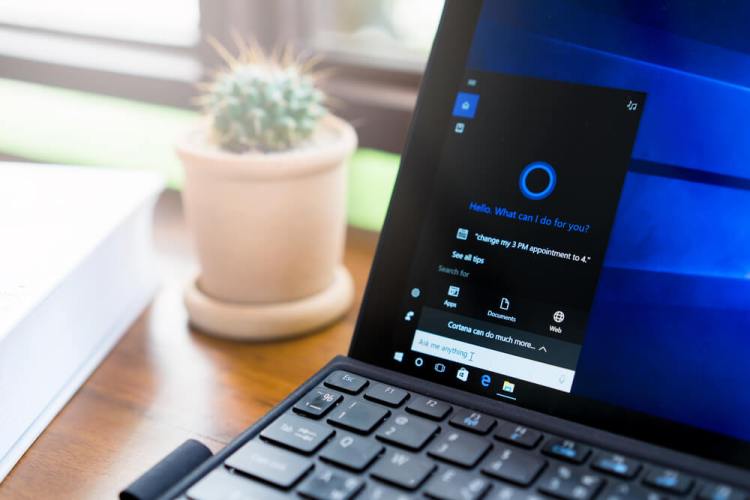Launching a new product feature is hard — remember Clippy from Microsoft Word?
To follow Windows 8 with a successful new OS was of utmost importance for Microsoft, but when you’re the 800-pound gorilla in the market, you’ve got to take risks even when the stakes are high.
Rolling out Cortana, an interactive digital assistant similar to Apple’s Siri, as part of Windows 10 was a move that could have backfired on Microsoft easily.
Luckily for the Seattle-based software powerhouse, Windows 10 is gaining ground on its own Windows 7 as the world’s most popular OS, and users appear to have taken a real liking to the blue-hued digital assistant.
June 5th: The AI Audit in NYC
Join us next week in NYC to engage with top executive leaders, delving into strategies for auditing AI models to ensure fairness, optimal performance, and ethical compliance across diverse organizations. Secure your attendance for this exclusive invite-only event.
Yet Cortana hasn’t been as popular as other voice assistant products. A small 2015 survey conducted by AYTM found that 62 percent of respondents had used Siri, 40 percent had used Google Now, and only 24 percent had used Cortana.
However, that was nearly two years ago. Today, Cortana’s user base has grown, but the app still isn’t quite as popular as one might imagine, considering hundreds of millions of people have access to it in their Windows 10 taskbar.
So what’s the deal, Cortana?
The voice command of a generation
When Apple first released the Siri feature on its iPhone line of products, people weren’t familiar with the concept of a digital assistant, or confident that their voice commands would actually produce the results they wanted.
That was 2011, and Siri didn’t make a splash right away, but as voice recognition technology has improved, users have become more comfortable using it. Microsoft primed the market for Cortana by introducing her as the AI in their popular line of Halo video games, introducing the female assistant to over 60 million Halo players before she joined Windows.
If you need proof that the setup was successful, look no further than Microsoft CEO Satya Nadella’s announcement from the company’s fourth-quarter earnings call. He shared that Cortana is seeing more than 100 million monthly active users, and the system has fielded 8 billion questions to date, of which more than 6 billion were voice queries.
How are people using Cortana?
The digital assistant is most often used for common tasks. Like her counterparts Siri and Alexa, Cortana can access the internet and quickly find answers to common questions, but she has a few tricks up her sleeve, too.
Cortana can help you plan a trip, add new items to your calendar, or compose a quick message to your friend. This last functionality brings Windows up to speed with macOS, which has offered the capability to share SMS messaging duties with a user’s iPhone for several years now.
The technology integrates with non-Microsoft apps, too. In addition to offering a number of features that take advantage of Microsoft core products such as Office, Cortana can access popular programs like Google Chrome through the use of a plugin.
Microsoft has made Cortana with scalability in mind, and with the funding power of a world software leader behind it, Cortana has a chance to make significant strides against the competition from rivals Google and Apple.
What do people wish Cortana could do?
It’s easy to make demands of a digital assistant, and some are more reasonable than others. People can be creative with what they expect of Cortana, but the future of digital assistants can only mean more functionality, so ask away, right?
Contextual awareness — the ability to answer questions posed in conversational form — is a feature that must be on the list for developers at Microsoft, Google, and Apple. For example, if you ask Cortana what a flight to New York costs on Friday, she’ll get back to you with an answer. However, if you add “What about on Saturday?” she won’t make sense of your request.
Google Now is developing the ability to have its digital assistant interact with items you have on screen. For example, if it recognizes that you’re viewing a news article about Saturday Night Live, Google Now might offer to play the most recent episode’s video outtakes. Cortana doesn’t yet offer a similar feature.
Some requests are more far-fetched. For example, some users would like Cortana to appear in her holographic blue form, as she did in the Halo video game series. That’s a feature we shouldn’t expect to see from Microsoft anytime soon.
The future of Cortana
With its trademark digital heroine in place on Windows and its mobile operating system, expect to see Microsoft start to push the feature more and more. It has yet to introduce Cortana in the car. Microsoft integrated systems are available, but none make use of the digital assistant.
As Cortana becomes more feature rich and is able to access a wider selection of apps, the prospect of an entirely voice-activated technology experience becomes much closer to reality. Voice recognition is already improving rapidly, and with a complete line of entertainment, communication, and transportation devices, Microsoft has a great foothold to deploy Cortana as a holistic solution and tie into IoT devices.


